Recent Articles
Popular Makes
Body Types
2017 Toyota Corolla Road Test and Review
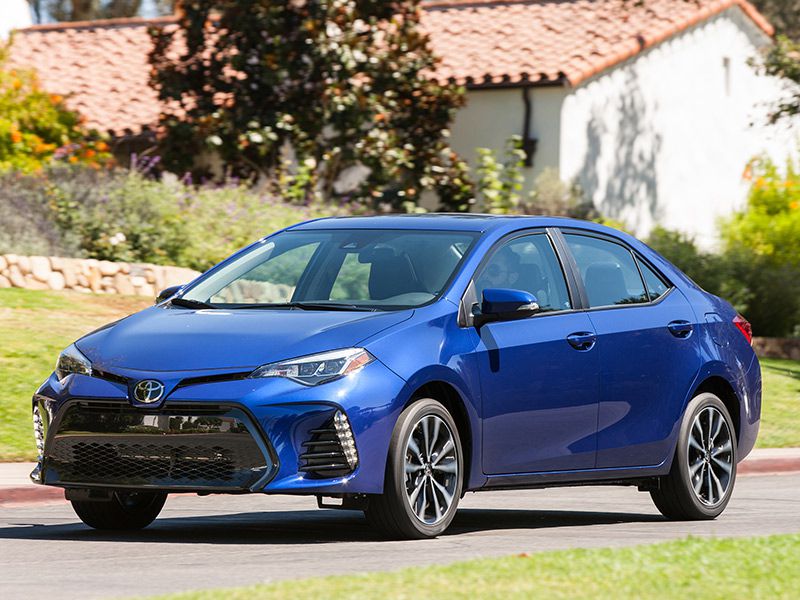
2017 Toyota Corolla 3 4 front profile in motion ・ Photo by Toyota
This year marks the 50th anniversary of the Toyota Corolla and the compact sedan remains as popular as ever. The Corolla is now in its eleventh generation and approximately 1.5 million units were sold in 2015 worldwide. More than 360,000 Corollas were sold in the United States alone, topping the compact sedan sales charts. The competition turned up the heat in the compact sedan class in 2016, with redesigns of the Honda Civic, Nissan Sentra, Chevrolet Cruze, and Hyundai Elantra. As a result, the Corolla slipped into second place for first half sales in 2016 behind the redesigned Civic. But the deck is reshuffled once again for 2017, with a refresh for the Corolla that includes a game-changing injection of safety technology.
Trim Levels
The 2017 Toyota Corolla is available in six trim levels: L, LE, LE Eco, SE, XSE, and XLE. The major differences among Corolla trim levels are largely infotainment and design-specific, rather than mechanical in nature. The lower trim levels are fitted with smaller diameter steel wheels, with disc brakes in the front and drums in the rear. The SE and XSE are fitted with 17-inch alloy wheels and disc brakes at all four corners, while the SE 50th Anniversary Special Edition wears 17-inch alloys with dark gray painted accents. Headlights vary by model, although all use LEDs. Convenience features including a power driver seat, pushbutton start, and a Smart Key are reserved for the top-of-range XLE.
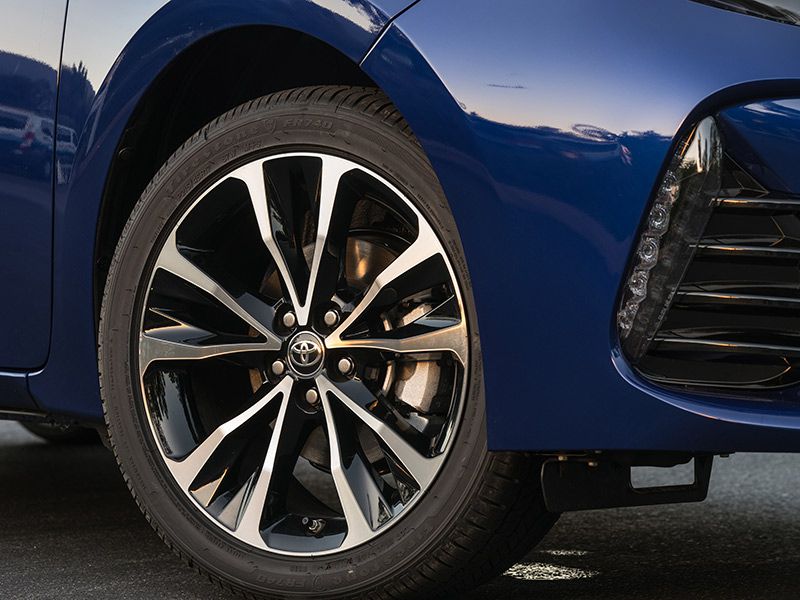
Exterior Styling
The 2017 Corolla sees slight design tweaks, highlighted by a front fascia graced with a wide grille and LED headlamps. The upper range SE, XSE, and XLE trim levels are equipped with complex-LED headlamps, while the L, LE, and LE Eco use bi-LEDs. The Corolla’s aerodynamic values vary depending on trim level. The Corolla LE Eco leads the lineup with an impressive 0.28 coefficient of drag (Cd) aided by a rear spoiler and underbody cladding. The L/LE/XLE have a Cd of 0.29, while the SE and XSE models are rated at 0.30. Ten standard exterior colors are offered for 2017: Barcelona Red Metallic, Black Sand Pearl, Blizzard Pearl, Blue Crush Metallic, Classic Silver Metallic, Falcon Gray Metallic, Galatic Aqua Mica, Slate Metallic, and Super White. The 50th Anniversary Special Edition Corolla is cloaked in a tasty Black Cherry Pearl.
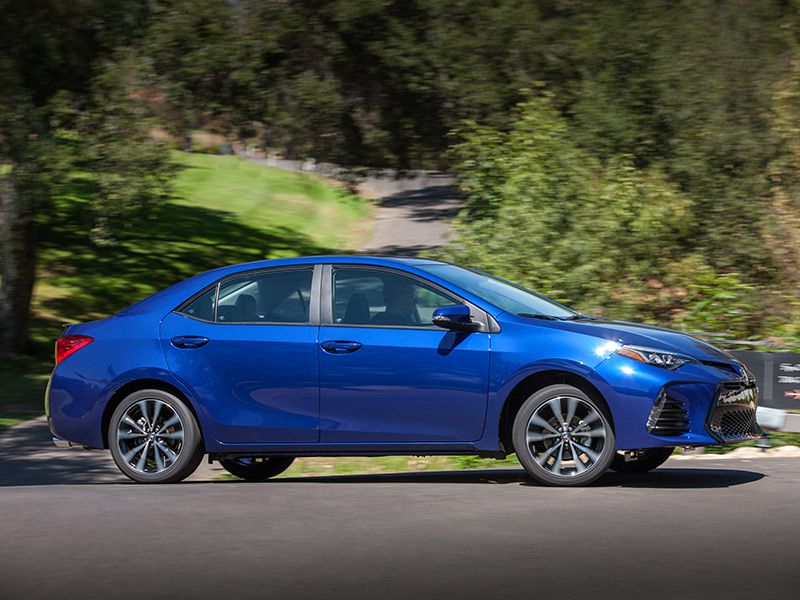
Photo by Toyota
Powertrain
All 2017 Toyota Corollas are equipped with a 1.8-liter DOHC VVT-i 4-cylinder engine that produces 132 horsepower and 128 lb.-ft. of torque, with the exception of the LE Eco, which uses a 1.8-liter four equipped with Valvematic technology to produce 140 HP and 126 lb.-ft. of torque. While a continuously variable transmission with intelligence shift (CVTi-S) is the Corolla’s primary transmission, the SE 6MT model benefits from a 6-speed manual. Toyota expects that roughly one in 10 2017 Corollas will be manuals. The CVTi-S is engineered to feel like a conventional automatic transmission with distinct shift points, rather than a typical CVT drone. Manual control over the ratios is provided via slapstick.
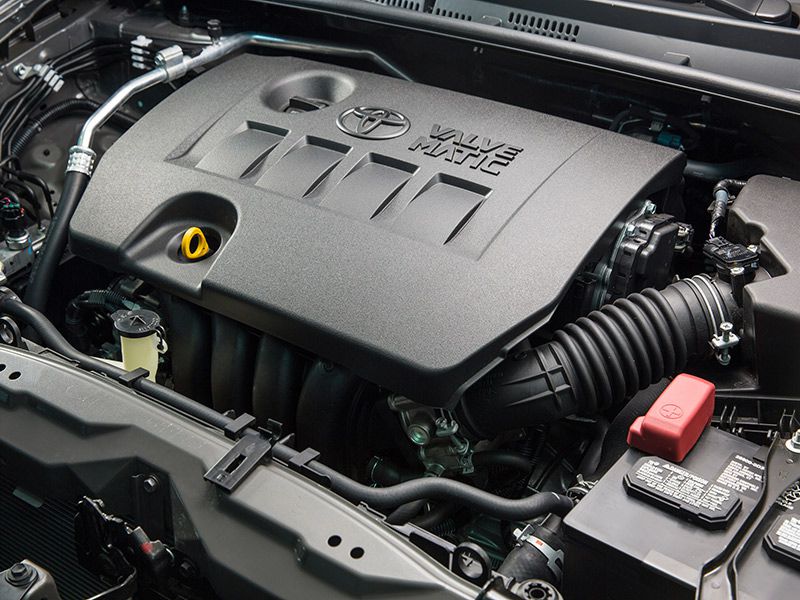
Fuel Economy
Fuel efficiency is a mainstay of the total Corolla value equation, dating back to the first models to hit US shores in 1968, when gasoline sold for a quarter per gallon. The 2017 Corolla’s fuel economy estimates vary based on trim level, wheel/tire combo, engine, and transmission. The LE Eco’s Valvematic 1.8-liter engine yields the best EPA fuel efficiency: 30 MPG city/40 MPG highway/34 MPG combined when equipped with 15-inch wheels. The SE 6MT is the least fuel efficient of the bunch, at 27/35/30. The old adage that manuals are more efficient than automatics is not necessarily true anymore.
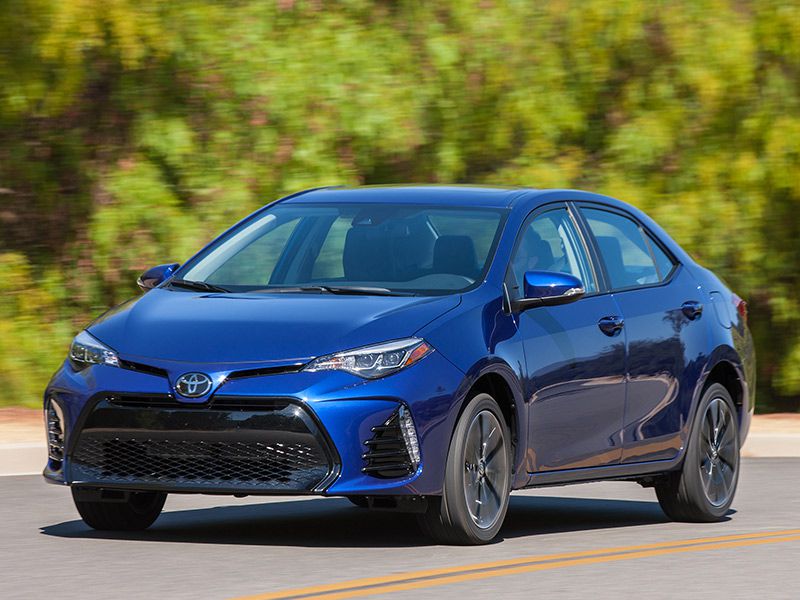
Photo by Toyota
Safety Technology
The 2017 Corolla is a class-leader among compact sedans in safety technology, with a backup camera and Toyota Safety Sense-P (TSS-P) now standard on every model. The TSS-P safety suite includes dynamic radar cruise control; lane-departure alert with steering assist; automatic high beams; and a pre-collision system with pedestrian detection. While the 2017 Corolla has not yet been rated, the National Highway Traffic Safety Administration (NHTSA) gave the 2016 Corolla an overall five-star safety rating, and the Insurance Institute for Highway Safety (IIHS) gave the 2016 Corolla a Good rating for moderate overlap front, side, and roof strength. The Corolla scored a marginal rating for the IIHS small overlap front test and an acceptable rating for child seat anchor ease of use.
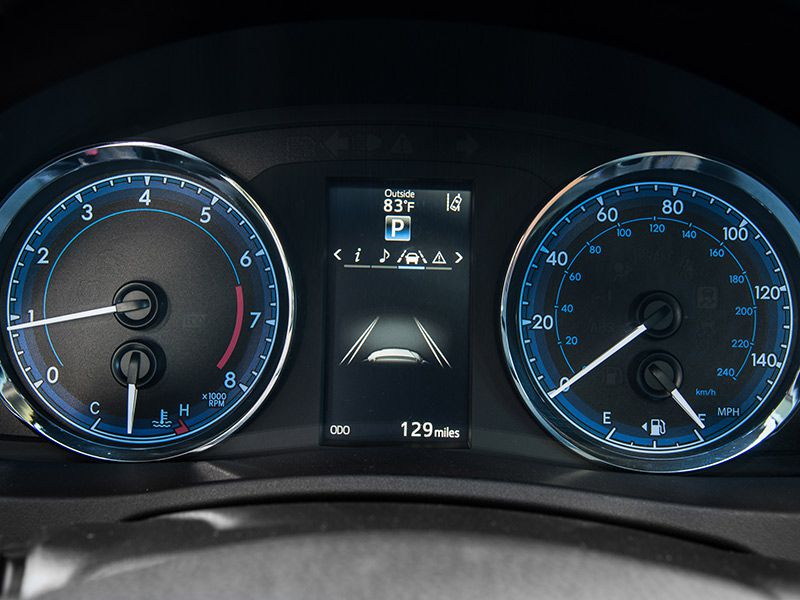
Photo by Toyota
Interior
The Corolla’s interior is spacious and serene, with an austere design that’s more low key than the Space Age Honda Civic and European-influenced Hyundai Elantra. The front bucket seats are nicely bolstered, but heated seats are only offered in the XLE. All trim levels have fabric upholstery, with the exception of the XLE, which uses SofTex simulated leather. The SE’s sporty seats are trimmed with contrasting stitching and “mixed media” fabric. Back seat passengers enjoy a whopping 41.4 inches of legroom, which stomps many competitors. The Corolla is a compact limo of sorts, with a cabin quieted by an acoustic windshield and the generous use of sound-deadening insulation in the floorboard, inner fender, and inner dash.
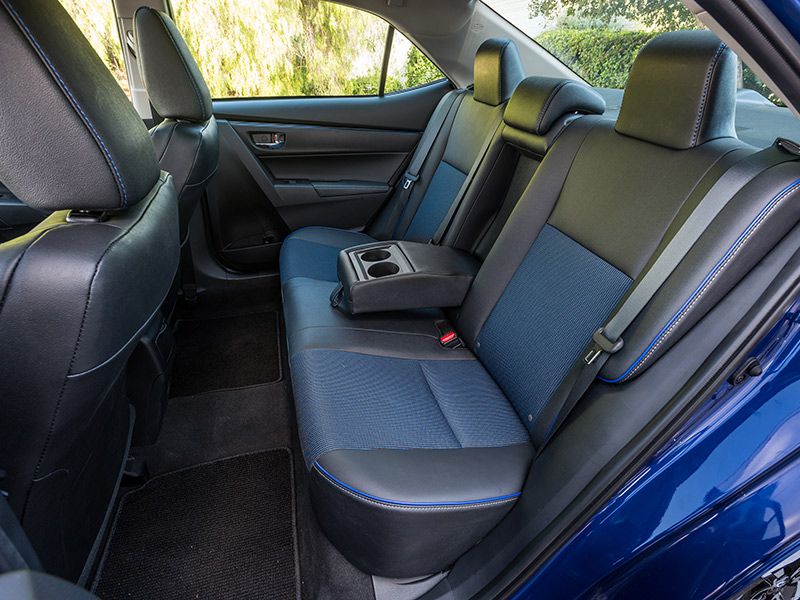
Photo by Toyota
Infotainment
Bluetooth and Entune Audio are standard equipment on every 2017 Corolla, along with a USB 2.0 port, Siri EyesFree, and a six-speaker audio system. The L, LE, LE Eco, and SE CVT models are equipped with a 6.1-inch touchscreen Entune infotainment system, while the XLE, SE 6MT, SE 50th Special Edition, and XSE are fitted with a 7.0-inch Entune system with navigation, SiriusXM satellite radio, HD Radio (with traffic and weather), and Gracenote cover art. There is no factory audio upgrade path. If you hanker for more watts or a subwoofer, you’ll have to visit your local car audio shop. Worth noting: While the Honda Civic, Hyundai Elantra, and Chevrolet Cruze all offer Apple CarPlay and Android Auto integration, the Corolla does not.
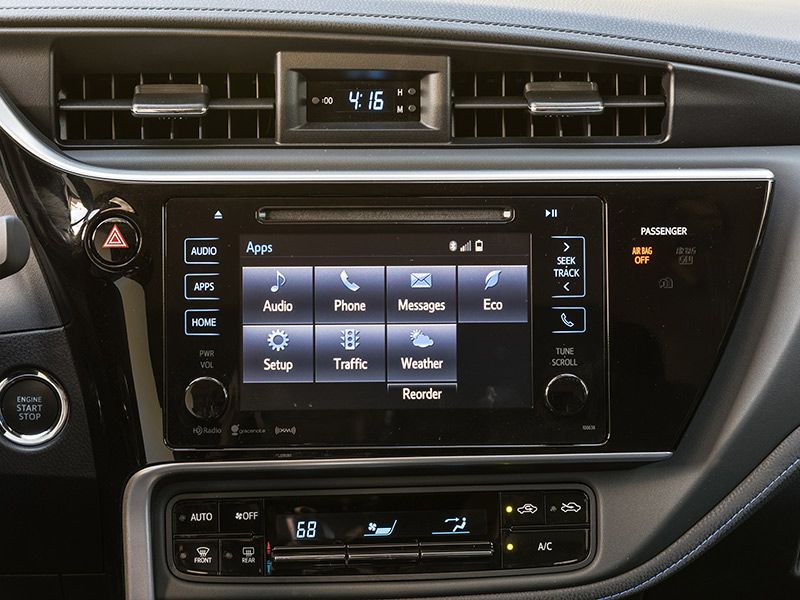
Photo by Toyota
Driving Impressions
I tested a 2017 Toyota Corolla SE with a 6-speed manual transmission at the launch event in Ojai, California. Our test route took us through town and into some remarkable canyon roads. Ride and handling were smooth and solid, and the cabin remained relatively quiet. The 1.8-liter engine was willing throughout, but the steeper climbs into the mountains left me wishing for more oomph. The shift mechanism was positive and clutch was easy, but not soft. While not a sports car by any means, the new Corolla was a pleasant partner on the serpentine roads, even if the downhill part was more enjoyable than the ride up. The driving position was good, aided by bucket seats with effective but not obtrusive bolsters. Adjustable lumbar support would be a welcome addition for long-haul commutes, as would an audio upgrade path. As I see it, the easy-to-drive manual-transmission Corolla would be an excellent choice for new teenage drivers.
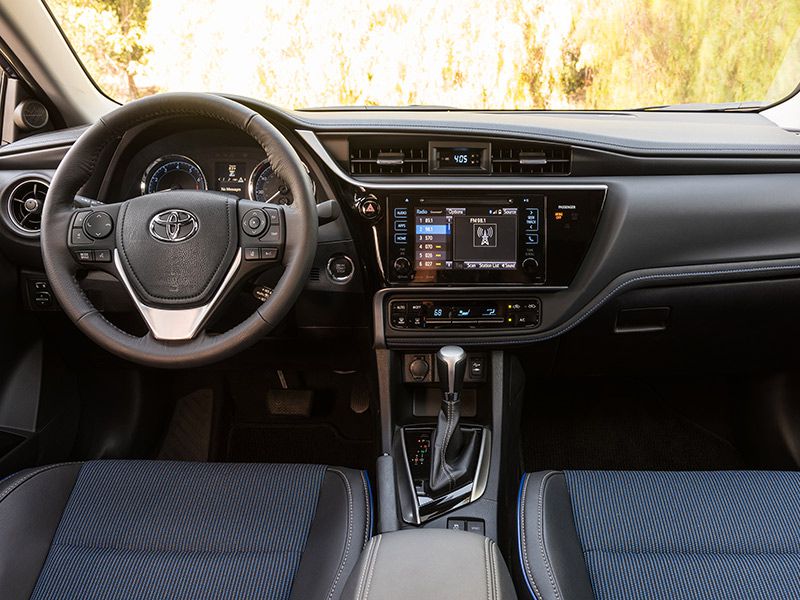
Photo by Toyota
Historical Perspective
Fifty years may be a long time, but Toyota just pushed the fast-forward button. While Corolla customers have a history of placing value and reliability ahead of flashy styling and sports car characteristics, Toyota’s path changed with the demise of the Scion brand. The Corolla now shares its spot in the showroom with the iM and iA. These two complement the Corolla, rather than compete directly. The iM’s 5-door hatchback design offers versatility for cargo hauling (with more room than the Yaris), but the sporty Mazda2-based iA’s tight back seat makes it far less attractive for families. You can guess which one will be on the chopping block when the twelfth-generation Corolla hits the street in 2020, built upon the Toyota New Global Architecture (TNGA) that promises improved fuel efficiency, ride quality, and performance.
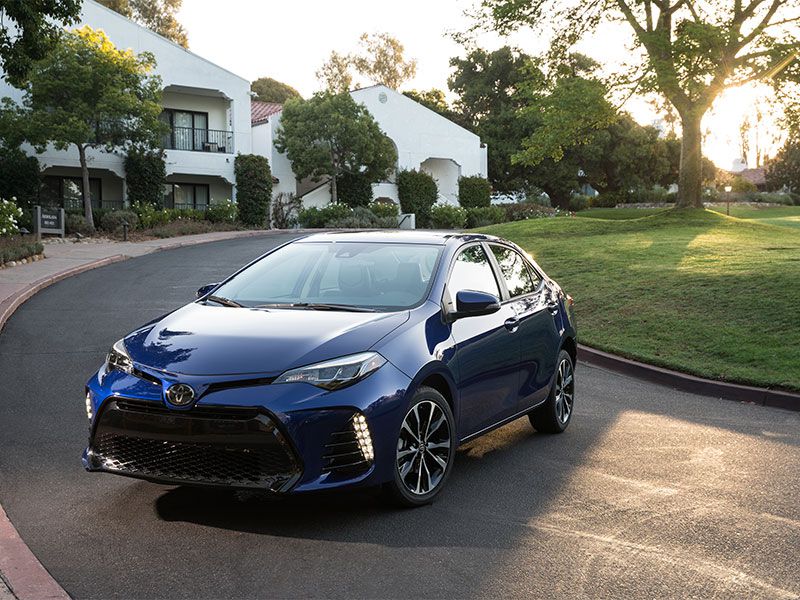
Photo by Toyota
Final Thoughts
The Toyota Corolla remains one of the most popular cars in the world and shows no signs of slowing down. With the inclusion of a full suite of safety technology as standard equipment, Toyota has thrown down the gauntlet. This is the measure that every other affordable compact sedan must now draw against. Forward-collision avoidance, adaptive cruise control, and active lane keep systems will soon be in every car. While you can get these technologies in other affordable sedans, they come at added cost. That said, the Corolla’s legendary reliability and total value equation are less challenged by the current competition than the rapidly changing nature of personal transportation. When the fully redesigned 2020 Corolla rolls out, it will face a bevy of relatively affordable electric cars with 200-plus mile range and the looming potential for shared autonomous transportation. Will value-oriented customers continue to buy new gasoline-powered cars at current volumes when more cost-effective solutions for commuters hit the street?
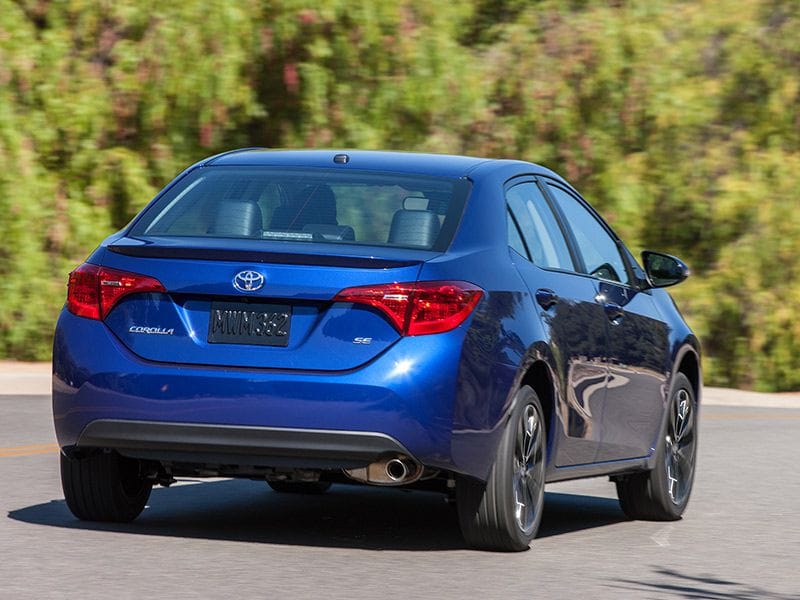
Photo by Toyota